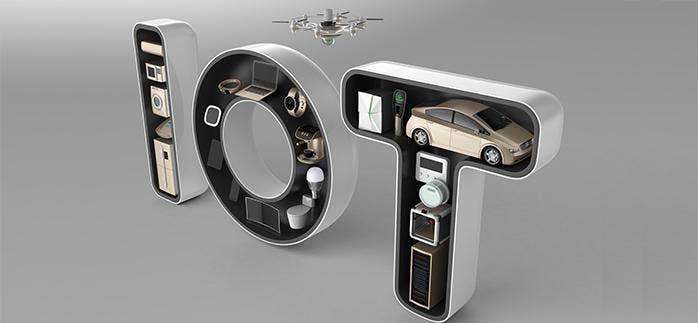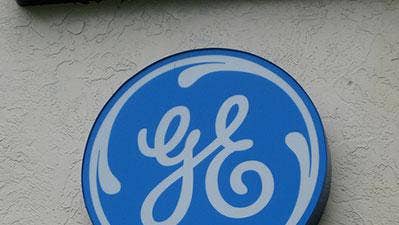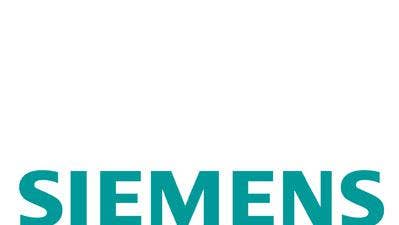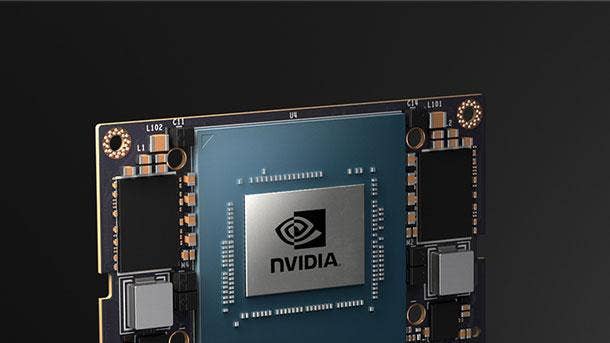The 10 Biggest IoT News Stories Of 2019
GE Digital does a 180 on its spin-off plans, two semiconductor companies merge to build a major IoT business, and IoT software providers invest in their consulting and system integration capabilities. These are the biggest IoT news stories from this year.

GE Digital Reverses Course, And Other Stories
It turns out GE Digital isn't going to become an independent company, wholly owned by General Electric, as we expected based on the company's announcement last year.
The decision to reverse course and keep GE Digital within GE itself was among the 10 biggest IoT news stories of 2019 when it came to the enterprise and industrial sides of the field.
Other developments that made big waves this year: an industrial giant getting into container technology for industrial IoT, two rivals in the semiconductor industry teaming up to work on a new IoT standard, two other semiconductor companies merging to build a major IoT business, and IoT software providers investing in their consulting and system integration capabilities.
What follows are the 10 biggest IoT news stories of 2019.
Get more of CRN's 2019 tech year in review.

10. GE Digital Pulls Plans To Become Independent Company
As General Electric's new CEO, Larry Culp, works to solve the industrial giant's various problems, the trajectory has changed for GE Digital since announcing last year that it would spin out the company's industrial IoT software arm as a wholly owned independent company. Power magazine reported in November that GE Digital will remain a part of GE and focus on four key markets, electric utilities and power generation among them. That news was based on a letter sent to customers from GE Digital CEO Pat Byrne, who was appointed in July to run the business. Under Byrne's leadership, GE Digital partners said they have noticed a renewed focus.

9. Siemens Gets Into Containers For IoT With Acquisition
Industrial giant Siemens is signaling the importance of container technology for industrial IoT with its acquisition of technology from edge computing startup Pixeom. The acquisition, announced in October, includes Pixeom's edge computing platform and employees but not the business itself. The company said Pixeom's edge computing platform "will be at the heart" of its future Siemens Industrial Edge ecosystem, which it described as an open ecosystem that enables companies to create and manage edge applications with ease to analyze data in factory environments. One of Pixeom's key capabilities is the ability to package, deploy and orchestrate cloud applications on commodity hardware through containerization, giving companies the ability to run these types of applications on edge and on-premises servers without the need for any specific hardware configuration.

8. Intel, Arm Team Up To Work On New IoT Standard
Intel has begun working with rival Arm and a consortium of other tech heavyweights to develop a new industry standard for IoT device onboarding. Intel announced in June that the company is a founding member of the new IoT Technical Working Group alongside Arm and other companies within the FIDO Alliance, an industry consortium that was founded in 2012 to develop standards for password-less authentication. The goal of FIDO's IoT Technical Working group is to create a standard specification for "large-scale IoT onboarding," the process in which devices are configured and connected to the cloud. Other participating companies include Microsoft, PayPal, Lenovo, Google and Amazon.

7. Infineon Targets IoT With $10B Cypress Acquisition
Infineon Technologies has signaled its plans to build a big business in IoT with its blockbuster acquisition of Cypress Semiconductor. The German semiconductor company announced its acquisition of Cypress in early June, saying the deal would be worth $23.85 per share in cash, or about $10.1 billion. The acquisition will accelerate its entry into new IoT applications for both industrial and consumer segments with "the most comprehensive portfolio for linking the real with the digital world," according to Infineon Technologies CEO Reinhard Ploss.

6. Big Moves In The RTOS Space From Microsoft, Wind River
Microsoft and Wind River made big moves in the real-time operating system space this year. For Microsoft, that meant re-entering it with the April acquisition of RTOS provider Express Logic, which the Redmond Wash.-based company said will give it access to "billions of new connected endpoints" to connect to its Azure cloud service for enhanced capabilities. Express Logic's ThreadX RTOS is designed for IoT and edge devices powered by microcontroller units that run in resource-constrained environments, such as lightbulbs, temperature gauges, air conditioners and medical devices. Meanwhile, Wind River announced in February the Wind River Helix Virtualization Platform, which combines the company's RTOS and an embedded distribution of Linux in a single edge compute platform that can also run other operating systems. The goal is to allow critical infrastructure operations to run legacy systems while enabling development of applications for new autonomous capabilities.

5. New Funding, Executives For IoT Startups
Some of this year's hottest IoT startups raised fresh funding from investors and appointed new executives. On the funding side, there were new rounds for startups ranging in everything from security and connectivity to edge computing and sensor software: Samsara raised $300 million at a $6.3 billion valuation, Zededa raised$16 million, Armis raised $65 million, Helium raised $15 million, IOTech raised $7.5 million, Tulip raised $39.5 million and Sight Machine raised $29.4 million. Other startups that raised money include Mocana, Xage Security, Litmus Automation, CyberX, Altizon, ReFirm Labs and Ockam. On the personnel side, Claroty appointed Siemens veteran Thorsten Freitag as its new CEO, Zededa hired Dell CTO Jason Shepherd as vice president of ecosystem, Armis added former Cisco executive Jeff Williams as chief revenue officer and Altizon added Tyson King as vice president of sales.

4. AT&T, Verizon Launch Nationwide NB-IoT Networks
Telecom giants AT&T and Verizon expanded their network coverage for power-constrained devices with new narrowband IoT networks that are available throughout the U.S. AT&T announced the nationwide availability of its NB-IoT network in April, calling it a "big step toward massive IoT and 5G."The company said NB-IoT will complement its existing LTE-M low-power wide area network in the U.S. and Mexico for LTE-M. Meanwhile, Verizon announced its national NB-IoT network in May, saying that ideal use cases include smart cities, smart buildings and utilities. The company also provides LTE Cat 1 and LTE Cat M1 networks for IoT. Sprint beat AT&T and Verizon to market with its own NB-IoT network last year.

3. IoT Software Vendors Expand Consulting, System Integration Expertise
Three major IoT software providers — PTC, Hitachi Vantara and Siemens — have significantly expanded their consulting and system integration capabilities. PTC acquired two system integration partners this year — Factora for industrial IoT and Twnkls for augmented reality — to expand its team of subject matter experts who can help accelerate deployments with customers for IoT and AR. Hitachi announced in September that it would combine two of its businesses, Hitachi Vantara and Hitachi Consulting, to lead a global expansion of its Lumada IoT platform. And Siemens is pushing deeper into system integration and consulting capabilities for industrial IoT with its Omnetric business, which is lead by former Siemens software channel chief Paul Kaeley.

2. New Edge AI Silicon Revealed From Intel, Nvidia
Intel and Nvidia both revealed new silicon products for artificial intelligence in edge devices that constrained by power, cost and size limitations. In early November, Nvidia announced the Jetson Xavier NX, which it called the "world's smallest supercomputer" for AI applications at the edge, giving robotics and embedded computing companies the ability to deliver "server-class performance" in a 10-watt power envelope. The credit card-sized computing board comes with 384 CUDA cores and 48 tensor cores, allowing it to provide up to 15 times higher performance than Nvidia's Jetson TX2 in a smaller form factor with the same power draw. A week later, Intel revealed the Movidius Myriad, its next-generation visual processing unit that promises more than 10 times the inference performance over the previous generation and six times the power efficiency of competing processors.

1. The Year Of IoT Security Acquisitions
2019 was a big year for IoT security companies getting acquired. At least five significant acquisitions happened, thanks to growing ambitions from Tenable, Cisco Systems, Palo Alto Networks, Accenture and Check Point Software Technologies. Tenable paid $78 million to acquire industrial security startup Indegy to extend its operational technology, or OT, expertise and capabilities. Cisco bought industrial IoT security company Sentryo to protect OT endpoints on the network. Palo Alto Network's $75 million purchase of Zingbox will allow it to offer IoT security as an integrated service. Accenture scooped up research and consulting firm Déjà vu Security. And Check Point took over device firmware protection startup Cymplify to protect devices against zero-day attacks.